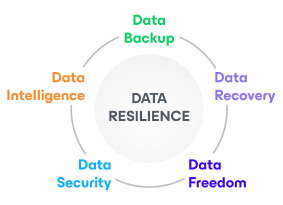Introduction
As collaboration platforms like Microsoft Teams become central to daily business operations, protecting the data within them is critical. From chat histories and shared files to team configurations, Teams holds a wealth of organizational data. Without a reliable backup strategy, organizations risk losing this valuable information to accidental deletion, cyberattacks, or compliance failures.
This guide explores why backing up Microsoft Teams is essential, explains how Teams data works, and shares practical tips and best practices to ensure your organization stays protected.
Why Every Organization Needs Microsoft Teams Backup
The Value of Teams Data
Microsoft Teams has become a linchpin for communication and collaboration in modern organizations. However, this reliance also brings a heightened risk of data loss, which could result in operational disruptions, productivity losses, or legal issues. A robust backup strategy ensures you can quickly recover from such incidents, maintaining business continuity.
Growth of Collaboration Tools
As remote work and digital collaboration surge, platforms like Microsoft Teams generate more data than ever. This rapid growth makes protecting that data through reliable backups an organizational necessity.
Understanding Microsoft Teams Backup
Why Backups Are Crucial
Backing up Microsoft Teams data mitigates the risk of data loss due to accidental deletions or ransomware attacks. It also ensures compliance with legal and regulatory requirements by enabling long-term data retention.
How Teams Data Is Stored
To protect Teams data, it’s essential to understand its structure:
- Chats: Files shared in chats are stored in OneDrive for Business.
- Teams Files and Notes: These reside in SharePoint Online.
- Meetings and Contacts: These are managed within Exchange Online.
Teams acts as a hub, integrating data from these sources rather than storing it independently.
Backup vs. Archiving
While backups focus on quick recovery in case of data loss, archiving stores data for long-term historical or compliance needs. Both are essential but serve distinct purposes and should be managed separately.
Practical Tips for Backing Up Microsoft Teams
Key Considerations for Your Backup Strategy
A comprehensive Microsoft Teams backup plan should address:
- Frequency: How often backups occur.
- Retention Policies: How long data is kept.
- Storage Locations: Where backups are stored (e.g., cloud or on-premises).
It’s also vital to test backups regularly to ensure reliability.
Overcoming Common Challenges
Organizations often face hurdles like slow backup speeds, fragmented data, and limited storage. To address these issues:
- Use incremental backups to minimize storage demands.
- Choose solutions with features like deduplication and compression to optimize space.
Choosing the Right Backup Solution
Look for backup solutions that:
- Protect all integrated data sources (Exchange Online, SharePoint Online, and OneDrive for Business).
- Preserve Teams metadata, such as team structures, channels, and settings.
- Use advanced APIs like the Microsoft Graph Export API for efficient Teams chat backups.
Challenges and Solutions
Avoiding Common Pitfalls
Many organizations struggle with:
- Inconsistent Backup Schedules: Leading to gaps in data protection.
- Limited Testing: Resulting in unreliable backups.
- Inadequate Retention Policies: Leaving critical data unprotected.
These pitfalls can be avoided with thorough planning, adherence to policies, and regular testing of backup processes.
Ensuring Smooth Data Recovery
Seamless data recovery depends on:
- Testing recovery processes to ensure backups are usable.
- Working with vendors offering flexible recovery options, such as restoring entire Teams or individual components like channels and files.
- Maintaining clear documentation and processes for recovery scenarios.
Best Practices for Teams Data Protection
Regular Backups
Frequent backups ensure your data is current and ready for recovery if needed. Backup frequency should align with your organization’s needs based on data criticality and recovery time objectives.
Testing Backup Processes
Routine testing of backup and recovery systems helps identify and resolve issues proactively, ensuring backups can be relied upon during emergencies.
Conclusion
As Microsoft Teams continues to play a pivotal role in workplace collaboration, safeguarding its data is essential. A robust backup strategy ensures:
- Data Availability: Minimizing disruptions in case of data loss.
- Compliance: Meeting legal and regulatory requirements.
- Business Continuity: Protecting productivity and operations.
By understanding how Teams data is structured, differentiating between backup and archiving, and following best practices, your organization can avoid common challenges and ensure seamless data recovery.
With the right tools and strategies in place, you can protect not just your Teams data but also your organization’s reputation and operational efficiency. Backup is no longer optional — it’s a critical part of modern data management.
Try a 30-day FREE trial of Veeam Backup for Microsoft 365 today. Unveil the power of complete access, control, and protection of your data with Veeam! Check out the additional resources below!
- Try in a labright now with a free, realistic sandbox with all resources provided.
- Watch a demo on Microsoft 365 backup best practices.
- Read the #1 Guide on Microsoft 365 Backup.
